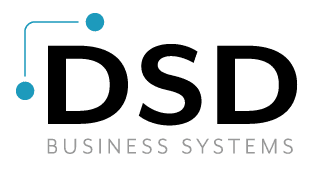Sage 100 Inventory, Common Information and eBusiness Enhancements
The Sage 100 Inventory, Common Information, and eBusiness Enhancements provide integrated solutions for managing inventory levels, streamlining common data processes, and enhancing online business operations. These enhancements focus on improving accuracy in inventory tracking, centralizing key business information for efficiency, and supporting advanced e-commerce functionalities.
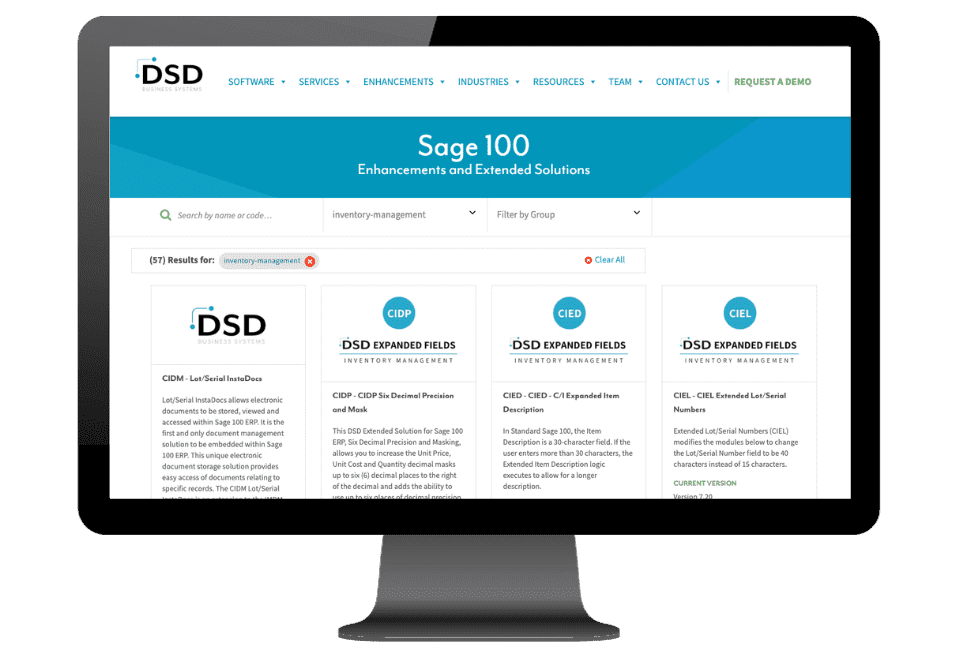
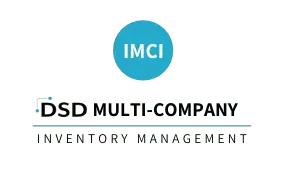
IMCI Item Inquiry by Company for Sage 100 enhances Inventory Item Inquiry, to allow display of Warehouse Quantity information for ALL Company Codes on a single panel.
A new button has been added to the Inventory Inquiry Main Panel called “Company”. When this button is selected, a new panel will pop up called “Company Warehouse”. It will display the same grid for quantities as on the Main Panel, except that it will also display the Company Code. All Company Codes are scanned for ALL warehouses for the display, excluding any company that has the word “TEST” in the company name. If a Warehouse Code exists for a company, and the item has not yet been setup for that warehouse, that Warehouse Code will still be displayed, with all quantities as zero.
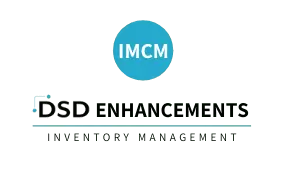
The I/M Delete and Change Items Utility for Sage 100 ERP has been enhanced to also allow for Delete, Renumber, and Merge of Miscellaneous Item Numbers.
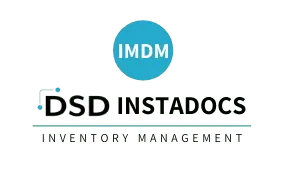
Inventory Management InstaDocs for Sage 100 allows electronic documents to be stored, viewed and accessed within Sage 100 ERP.
The Documents Panel is embedded into various Sage 100 ERP Maintenance, Inquiry, and Data Entry programs. As each record is accessed, the documents that correspond to that record are displayed. The user has the ability to drag and drop documents, select documents to edit, and tag documents with unlimited keywords. Users can then search all stored documents based on those specific keywords. Master Search allows users to search all documents based on File Name, Keywords, and Document Source.
With InstaDocs Role Security enabled, you can define which users/roles can View, Open, Email, Delete, and Drag and Drop documents within the InstaDocs Documents Panel.

IMFX Rebuild Inventory History Utility for Sage 100 is a rebuild utility designed to rebuild the Inventory Item Sales History and Customer Item Sales History files.
The Warehouse Item Sales History, Customer Item Sales History, SO SalesHistory, and Customer Sales History tables are rebuilt from data in the AR Invoice History Header and AR Invoice History Detail files.
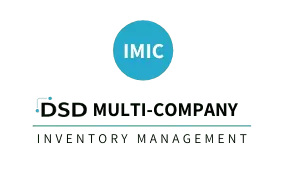
IMIC Inventory Masterfile Synchronization for Sage 100 allows the user adding new inventory items in Item Maintenance, to automatically copy those new items to other company’s Inventory Masterfile.
A new Company Synchronization Maintenance menu item has been added to the Library Master Setup Menu that allows selection of Company Codes for automatic copy of Inventory Item additions. There is a checkbox option to allow Item changes to also update other companies.
There is also a checkbox option to have a user prompted when an item is added or changed, and the user may change the companies to be updated, and save the selections by company.
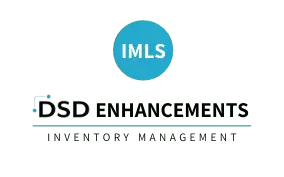
IMLS Lot/Serial Traceability adds the ability to track lot and serial number components and which parent items they were produced into from Bill of Materials Production Entry. You are then able to trace these items through to which S/O Invoice they were shipped on. This is particularly useful in situations where there is a product recall on an item and you need to determine where those items were shipped.
Note: DSD’s Multi-Bin Module or DSD’s BMPD enhancement is required for this enhancement.
Bill of Materials Production History must be enabled for this enhancement to function properly.
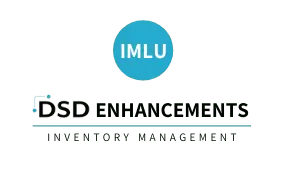
IMLU Lot / Serial UDF’s has been designed to allow for entry and maintenance of User-Defined Fields (UDFs) for Lot and Serial Items.
Up to 20 UDF’s may be defined in the I/M Setup Menu, Lot/Serial UDF Maintenance. These UDF’s can have different attributes: String, Uppercase, Numeric, Zero-Filled, Date, PO Number, Vendor Number, and Yes/No (checkbox).
Also customizable is the length of each UDF and if the specific UDF can be changed AFTER PO Receipt of Goods, SO Invoicing, or I/M Transaction Receipts. For Lot Items, a UDF may be defined as a Number and if the same Lot is received multiple times, that UDF number may be “added” to the existing UDF field in Inventory. For Lot Items, if the same Lot is received multiple times, that UDF may be flagged to overwrite existing UDF fields already in Inventory.
You will be able to review / maintain these UDF’s in a variety of areas, including: PO Receipt of Goods, PO Receipt History Inquiry, Inventory Maintenance / Inquiry, S/O Invoice Data Entry, S/O Shipping Data Entry, S/O History Inquiry, I/M Transaction Entry, B/M Production Entry, RMA Data Entry, RMA Receipts Entry, and A/R Invoice History Inquiry. A UDF Button appears in all of these areas and a pop-up panel will display these UDF’s.
CRW / ODBC Dictionaries are added for each data file storing UDF’s so that a user can link in to existing CRW reports.
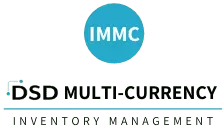
The Multi-Currency Inventory Management for Sage 100 enhancement provides users with the ability to set up a different price and cost for each item per Currency. You may also set up price levels in different currencies, by item or customer, and print price level reports by Currency. This enhancement is essential for any company quoting and making sales in more than one currency.
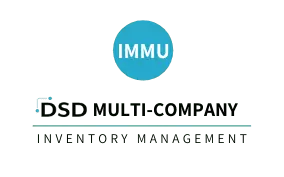
This DSD Enhancement to the Inventory Management module adds the ability to transfer inventory from one company and warehouse in Sage 100 to another.
When an Inter-company inventory transfer is made, the inventory is reduced in the “From” Warehouse/Company with an “IT” inventory transaction and is increased in the “To” Warehouse/Company with an “IR” transaction. A General Ledger transaction is written to the other company’s Daily Transaction File, containing a debit to that other company’s expense account, and a credit to the predefined Inter-company Allocation account. A pair of Inter-company Allocation Accounts must be set up for each company, which has been setup for Inter-company processing.
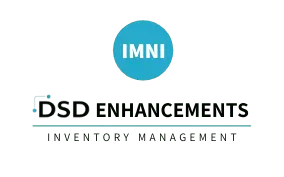
This DSD Enhancement creates an Automatic Next Item Number option in Inventory Item Maintenance.
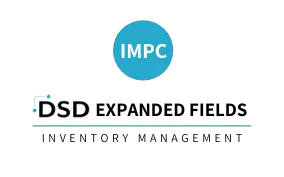
IMPC Extended Price Codes for Sage 100 the number of Price Level Breaks in Item Pricing Information have been increased to 20. This enhancement is necessary for any company with more than five Price Level Breaks. IMPC facilitates the definition of 20 quantity breaks for each price code level, instead of the existing 5 breaks.
This feature has been added to the Extended Price Code Maintenance Setup program in Inventory Management, to the Item Pricing Info screen (and Inquiry) in Item Maintenance, and to the Price Lookup Inquiry available in Sales Order and Invoice Line Entry.
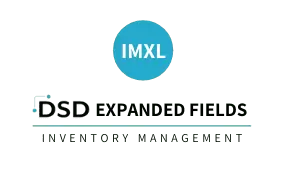
IMXL Expanded Price Levels (10-char) Standard Sage 100 ERP only allows for upper-case Price Levels, which means that you only have 36 Price Levels available (A-Z, 0-9). This enhancement changes the Price Level to a 10-character Upper-Case field, allowing you an almost unlimited number of Price Levels.
This feature has been added to the Price Code Maintenance Setup program in Inventory Management, to the Item Pricing Info screen (and Inquiry) in Item Maintenance, and to the Price Lookup Inquiry available in Sales Order and Invoice Line Entry.
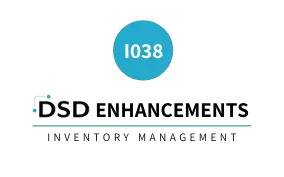
Adds an Alternate Unit of Measure (AUM), and Alternate Unit of Measure Factor (AUMF) to Product Line Maintenance and Item Maintenance.
